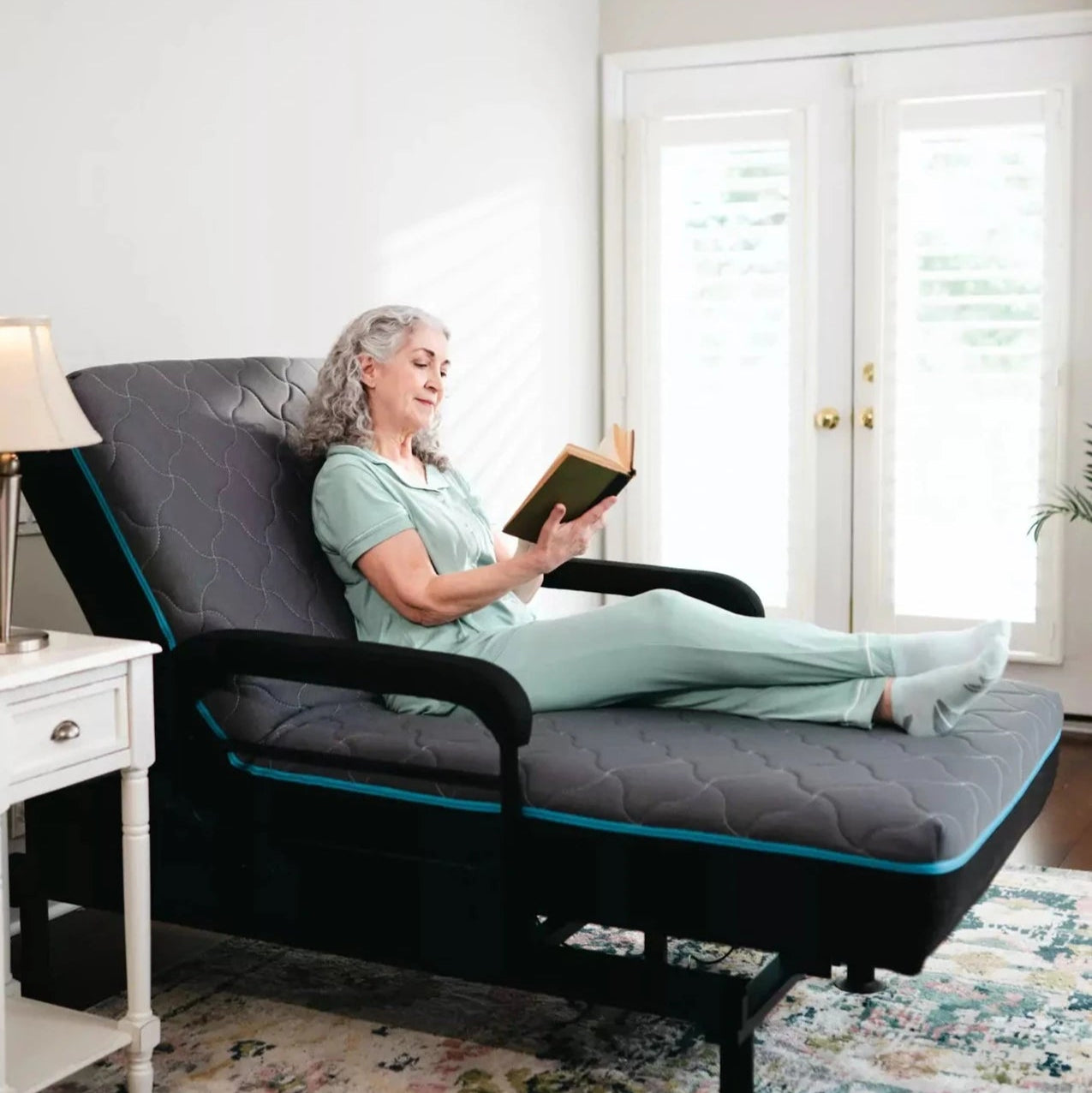The Hospital Beds For Home Use Diaries
Table of ContentsThe Ultimate Guide To Hospital Beds For Home UseThe Ultimate Guide To Hospital Beds For Home UseThe Best Strategy To Use For Hospital Beds For Home UseFascination About Hospital Beds For Home UseAll about Hospital Beds For Home UseEverything about Hospital Beds For Home UseOur Hospital Beds For Home Use Statements
There are 3 primary kinds of health center beds: manual, semi-electric, and fully-electric. These beds utilize hand cranks to readjust the bed's elevation and raise and decrease the head and the foot.
Semi-electric beds have an electrical motor to elevate and decrease the head and foot sections of the bed (hospital beds for home use). Full-electric beds have an electrical motor that can elevate the head and foot areas of the bed as well as the entire height and positioning of the bed.
A Biased View of Hospital Beds For Home Use
There are a number of kinds of healthcare facility beds, each designed to satisfy specific person needs. Below are some common types: This is the most typical kind of medical facility bed, made for general clinical use.
Reduced to the ground than a conventional bed. This kind of bed is created for bigger clients, with a bigger frame and greater weight ability than a conventional bed. This kind of bed is designed particularly for children, with smaller sizes than a conventional bed. Unique attributes such as full length side rails and animation design.
This kind of bed is created for seriously ill patients who need open tracking and specialized clinical tools such as ventilators and mixture pumps. This kind of bed is made for usage throughout labor and delivery, with flexible placements and attributes to sustain the mommy and baby during the birth process.
Getting The Hospital Beds For Home Use To Work
Several function and the accessories execute expanding grip to various parts of the vertebra and the extremities without moving the body. These are just a few instances of the kinds of health center beds offered. The certain type of bed used will certainly depend upon the client's problem, clinical needs, and various other aspects.
Here is things you need to recognize. A one-function hospital bed is a clinical bed that enables a client to relocate only the head or foot section up or down. A 2 feature hospital bed typically describes a kind of clinical bed that has two flexible functions to aid clients in hospitals or care facilities.

6 Simple Techniques For Hospital Beds For Home Use
A 7-function ICU bed is a sort of clinical bed that provides a number of adjustable functions to sustain critically ill individuals in a critical care unit (ICU) (hospital beds for home use). The 7 features generally include: Backrest adjustment: The backrest can be adjusted to various angles to help the patient sit up or exist down comfortably
Height adjustment: The bed can be elevated or decreased to make it less complicated for people to obtain in and out of bed, and for caretakers to supply treatment. Trendelenburg setting: The entire bed can be tilted to promote blood circulation and blood circulation in the body. Reverse Trendelenburg setting: The bed can likewise be slanted in the opposite direction to advertise blood circulation and blood circulation content in the informative post top body.
1. What Size is a Health Center Bed? 2. Just how much Does a Health Center Bed Expense? 3. Why Do Hospital Beds Have Side Bed Rails? 4. What Are The Main Medical Facility Bed Parts?. While even more inexpensive than electric versions, these beds need physical effort for changes. The major advantages of hand-operated beds are their affordability and dependability, as they don't rely on electricity. Nonetheless, the requirement for manual initiative can be a restriction in situations where fast modifications are required or where caretakers deal with physical difficulties.
3 Easy Facts About Hospital Beds For Home Use Described
Semi-electric healthcare facility beds supply a balance of guidebook and electrical controls. These beds provide an optimal middle ground between handbook and fully electrical choices, using convenience of usage without the full expense of electric models.
Semi-electric beds are well-suited for clients who require modest changes to the head and foot areas however can manage without frequent height adjustments. This makes them a cost-effective solution for those looking for convenience and comfort without the need for constant repositioning. Fully electric health center beds include electric controls for seamless changes to the elevation, head, and foot sections.
Specialty medical facility beds, such as ICU beds, long-term treatment beds, and bariatric beds, are very carefully developed to address details clinical needs. These beds supply customized care for varied client teams, enhancing both outcomes and convenience. In the complying with areas, we will explore the primary kinds of specialized medical facility beds, detailing their particular advantages and applications.
With years of experience in producing electrical direct actuators - hospital beds for home use and close cooperation with the health care sector, TiMOTION is well-positioned to offer dependable medical care options. Our up and down integrated firm manages every action of the production process, from layout to actuator assembly, guaranteeing we supply outstanding value and personalized options customized to your details needs
How Hospital Beds For Home Use can Save You Time, Stress, and Money.

To get more information concerning integrating these innovations right into your products, call us today. Further reading:.
Information is sourced from the Medicare Cost Report.

More About Hospital Beds For Home Use
A healthcare facility bed is a bed created particularly for clinical purposes. It is not only an area for patients to relax, however likewise a platform for clinical procedures. Unlike normal home beds, hospital beds generally have flexible functions, which can help with clinical personnel to make various adjustments according to the demands of individuals, such as altering the elevation, disposition, and support angle of the back and legs of the bed.